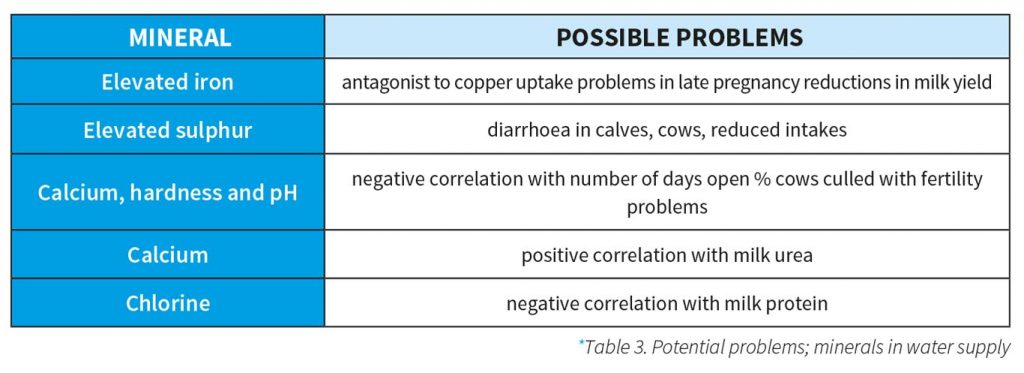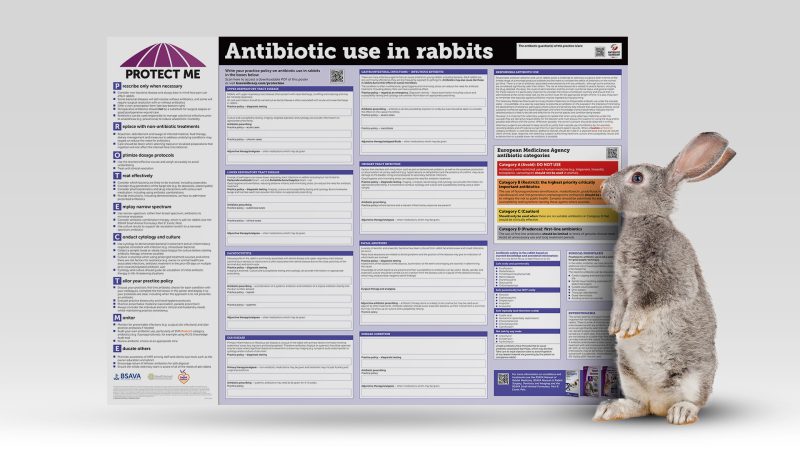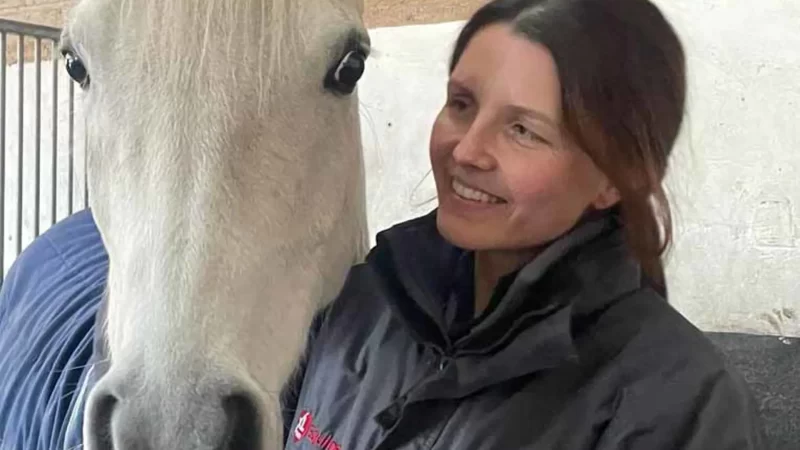Water: vital, but clean?

Jamie Robertson says that while there can be no denying the critical importance of clean water to the health of cattle, evidence from around the UK shows that many units aren’t giving animals access to enough of it. Here, Jamie advises on the best way to offer water to cows; how much to give them and how to know when things aren’t right…
Water is the most vital, least expensive, and most seriously underrated input on dairy units after fresh air. Milk is approximately 87 per cent water, faeces and urine are 92 per cent moisture, and breathing produces moisture. A 100-cow unit with 10,000l p.a. cows will have a water turnover approaching 3,750 tonnes per year, at a modest cost of £5-6,000 if direct from the mains, less if taken from a borehole.
Whilst water is a prime ingredient for positive health and productivity, casual observation of facilities and animal behaviour around UK dairy units suggests that water is not always a highly valued part of the business. Empty drinking bowls, cows queuing to drink from a trough, drinking off the floor and seldom a mention of water quality. A research review on water for AHDB (2017a) describes a range of limitations to health and productivity directly related to access to water and water quality, and direct impacts on financial health. Most of the UK cattle sector has no information on water flow rates or water quality at farm level – but does this matter?
Guidance information on how much water is required for different ages of cattle and cattle under different physiological conditions is readily available. Table 1 shows estimated water requirements of dairy cows influenced by milk yield, DM% and ambient temperatures (AHDB 2012), and Table 2 shows estimated water requirements for beef cattle at different ambient temperatures (National Research Council 2000).
Flow rates at drinkers have a recommended minimum flow rate of 10l/min, and more where demand is high, for example in water troughs on the exit from parlours. Cows can drink up to 20l/min. Ten percent of cows should be able to drink simultaneously; that suggests a minimum effective drinking perimeter would be 4.5m for a group of 100 cows. Cattle should have access to at least two sources of water to prevent restriction of intake.
To reduce soiling of water troughs, a guard rail set at 200mm distance from the top of the trough or a step up to the trough of 200mm height is beneficial. Troughs should always be fitted with a means of stopping the water supply and also of emptying the trough completely.

Calf water intakes
Water is an essential ingredient for rumen development and is an absolute requirement for the fermentation of the early calf ingestion of solid feeds. The requirements are simple:
• Clean water available after day 1-2, and fresh.
• Quantity: 1-1.5/d at start, rising to 4-5l/kg DMI per day.
Calves pre-weaning drank significantly more water (+47 per cent) when offered warm (16°C–18°C) rather than cold (6°C–8°C) water. Around weaning, water intake is positively correlated with starter and hay intake and negatively correlated with milk intake.

The irony is that the routine provision of clean water in front of calves is not a forgone conclusion. Water should be available a few metres away from automatic milk feeders, at a height at which calves do not have to drop their necks too far to drink. If water and feed are both kept clean, helped by a degree of separation, calves eat more and increase growth rates. Water should be placed in front of penned calves at least one hour after the milk feed to prevent ruminal drinking.
Water temperature has an impact on intakes and performance of cattle, with a recommended target temperature of between 10-20°C. Milk yields are reduced with water temperatures at 3°C compared with 10, 17 and 24°C.
The value of guidelines for livestock water quality (Defra 2012, AHDB 2017a) is hard to quantify as relevant water samples are seldom taken on UK cattle units apart from annual tests in the parlour. However, analysis of water samples from boreholes on UK livestock units (n=140) showed that whilst 80 per cent were below action levels on each of 12 measured variables, the remainder were not (AHDB 2017a). A total of 15 per cent of samples were above 250mg/ml for sulphates, and six per cent in excess of the 15mg/ml recommended action level for nitrates. Potential problems with minerals in water supplies are shown in table 3.

Water monitoring
There is a requirement for all off-mains water supplies through the parlour to be tested, usually annually. Water quality at source is not necessarily the same as supplied to the cattle, and appraisal of water troughs around a farm is useful. Testing can include physical presentation: cloudiness or turbidity; gross contamination and odour
If it looks rank and smells bad, there is little point sending a sample for analysis; it needs cleaning up. However, when submitting water samples for analysis, ask for an assessment of:
• Total soluble salts or total dissolved solids,
• Hardness – Calcium, magnesium, iron, aluminium, zinc and manganese all affect water hardness.
• Nitrates.
• Iron.
• Microbial contaminants such as coliforms E. coli and Salmonella
Sampling at source gives an indication of base water quality. Samples from around the unit need only to check microbiology for local, within-farm contamination. Guidance on how to sample water correctly is widely available (e.g. AHDB 2017b). Do not support the submission of any water samples in second-hand containers unless they are aseptic.
This article contains material first published as Robertson J F (2018). Water: the good, the bad, and the ugly. Cattle Practice Vol 26:2, 105-112.
Jamie Robertson, who has a degree in animal science and an MSc in animal production, is a research partner with AFBI on the Optihouse Project, where the aim is innovative calf housing and environment management to promote calf health and performance.






